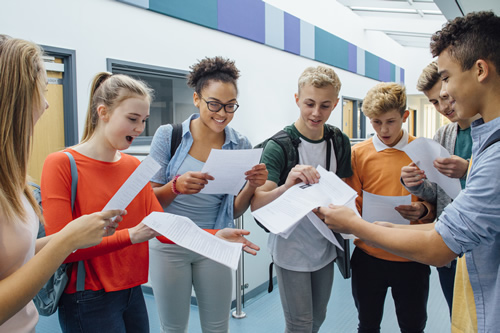When I became the principal of Fuller Elementary in Chicago, there were certain groups of students – particularly our male students – who were noticeably lagging behind their peers. My team and I knew it was important to close this student achievement gap, engage all students in the learning process, and better prepare our students for success on their state tests, in later grades, and beyond.
Our turnaround story is one that is still in process; however, we have already made great strides using a multi-faceted approach. Here are three ways we are working to drive student achievement and make our improvement goals a reality.
Related content: Improving student achievement through choice
Build a data culture
Data is so powerful in driving change in the classroom – from the way teachers teach to the way students learn. We started really delving into performance data to determine how groups of students were performing on grade-level standards. This allowed teachers to then individualize their instruction accordingly to meet the varied learning needs of all students.
By crunching data at the school, classroom, and individual levels, we’ve been better able to spot trends and understand why certain groups of students were struggling – or improving – more than others. My teachers and I also started initiating more data conferences so that together we can discuss instructional practices and bounce ideas off one another.
This type of data review isn’t a one-time thing – we look at data on a regular basis. The data is always changing and, as educators, we need to adjust accordingly to make sure the instruction is driving the desired student outcomes. As an example, our teachers create weekly assessments that measure how well students are mastering specific standards after re-teaching.
Transform small group instruction
Small group instruction (SGI) is a non-negotiable part of daily practice at Fuller Elementary. In every grade, there is a set schedule all teachers follow that allocates time – anywhere from 45 min to an hour – for this type of instruction.
The more we dive into SGI, the more we realize that good instructional practice is effective regardless of whether it’s happening for an entire class or with select groups of students. For example, varied question and discussion techniques, the use of explicit instruction where necessary, partnered work, peer- and self-assessment, and more shouldn’t be avoided just because the instruction is taking place in smaller groups.
In math, teachers emphasize problem-solving techniques, rather than merely procedural fluency and answer getting, as a way to build students’ proficiency and number sense and to allow them to demonstrate mathematical understanding in a variety of contexts. In reading, teachers are encouraged to use complex texts and write standards-based, text-dependent questions for students to analyze and discuss.
Our teachers also incorporate a variety of engaging technology-enabled instructional and game-based programs into SGI, with i-Ready being the primary edtech tool we use. This online program gives our students more personalized instruction, based on their own diagnostic data, so they can have extra practice mastering the concepts and skill sets being taught in class. This complements our teacher-led instruction well and further engages students in the learning process.
Listen to students
One strategy we’ve adopted that is truly changing our lens about student achievement and learning is interviewing students regularly about their learning, including the learning that occurs in small groups. This practice forces us to consider the amount and quality of learning from the student perspective. When we have feedback sessions with teachers, we are also better able to identify the variance between the ideal state, intentions, and reality of student learning.
As principal, I will also have lunch with my students, play with them at recess, sit in on classes, and even teach my own lessons at times. It is important for me, as well as my teachers, to be tuned into – and really listen – to the needs of our students so we can build relationships, help support student achievement, and accelerate their growth.
As mentioned, this transformation is a work in progress and there is always room to grow, but we as a school community are already seeing positive results. The gap among students – particularly with my male students – is decreasing, grades are improving, and attendance is up.
Overall, our teachers and students alike are really focused on progress. And, as we continue this hard work, these are the type of successes we will continue to celebrate.
- 3 ways to avoid summer learning loss - April 19, 2024
- High school students say AI will change the workforce - April 18, 2024
- Motivating students using the Self-Determination Theory - April 17, 2024


